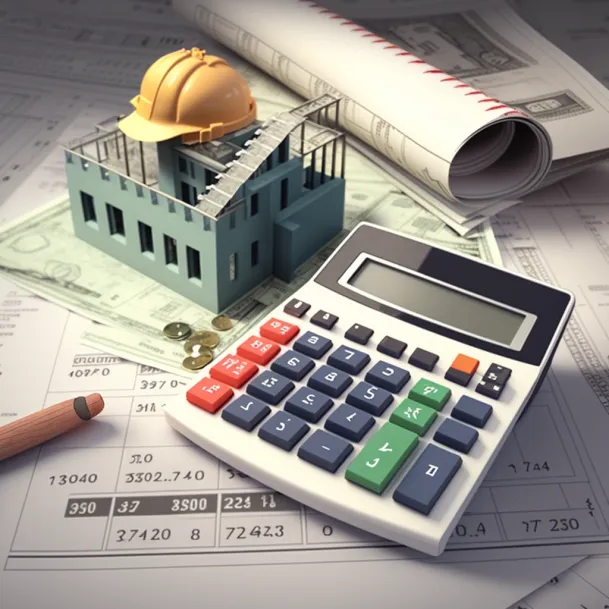The architecture and construction industry is perpetually navigating a complex web of challenges, but in recent years, a perfect storm has coalesced into what professionals are now calling the “Design Development Cost Crisis.” This isn’t a single issue but a multifaceted predicament where soaring expenses, supply chain disruptions, labor shortages, and evolving client expectations converge, threatening the viability of projects both large and small. For developers, architects, and homeowners alike, understanding the roots of this crisis and implementing strategic solutions is no longer optional it’s essential for survival and success. This deep dive explores the intricate layers of this crisis and provides a actionable roadmap to mitigate its impact.
Deconstructing the Design Development Cost Crisis
The Design Development Cost Crisis refers to the unprecedented and rapid escalation of expenses associated with taking a project from initial concept through detailed design and into the construction phase. This phenomenon is squeezing profit margins, forcing difficult value-engineering decisions, and in some cases, causing projects to be abandoned entirely. It’s a global issue driven by a confluence of macroeconomic, industry-specific, and societal factors.
The Primary Drivers Fueling the Construction Cost Crisis
To effectively combat this crisis, we must first understand its core components. The inflation in design and development costs is not random; it is the direct result of several interconnected factors.
A. Material Price Volatility and Supply Chain Disruptions
The global pandemic served as a catalyst, exposing the fragility of international supply chains. Lockdowns, factory closures, and port congestion created monumental delays for essential building materials like lumber, steel, and concrete. The basic economic principle of supply and demand took hold: with supply constrained and demand remaining relatively constant, prices skyrocketed. Even as the world has reopened, geopolitical tensions, trade policy uncertainties, and high shipping costs continue to perpetuate a state of volatility, making long-term cost forecasting incredibly difficult.
B. The Critical Shortage of Skilled Labor
For decades, the construction industry has grappled with an aging workforce and a failure to attract younger generations to the skilled trades. This long-simmering problem has now reached a boiling point. The shortage of carpenters, electricians, masons, and project managers means that those who are available can command higher wages. This increased labor cost is a significant contributor to overall project inflation. Furthermore, a rushed or underskilled workforce can lead to errors and rework, further driving up costs and delaying timelines.
C. The Rising Complexity of Building Codes and Regulations
As our understanding of environmental sustainability, resilience, and safety improves, building codes inevitably become more complex. Regulations concerning energy efficiency (e.g., stricter insulation requirements), seismic resilience, accessibility, and fire safety are essential for progress but add layers of complexity to the design process. Compliance requires more detailed engineering analysis, specialized materials, and additional documentation, all of which translate into higher soft costs and, frequently, higher construction costs.
D. Technological Integration and Its Associated Costs
The adoption of Building Information Modeling (BIM), virtual reality, and other sophisticated design technologies has revolutionized the industry. These tools enhance precision, improve collaboration, and help identify clashes before construction begins. However, they come with a high entry price. Firms must invest in expensive software licenses, powerful computing hardware, and, most importantly, ongoing training for their staff. This technological overhead is a necessary cost of staying competitive but adds to the financial pressure on design firms.
E. Fluctuating Energy and Fuel Costs
The entire construction ecosystem runs on energy. From the manufacturing of materials to the transportation of goods to the operation of heavy machinery on site, fuel costs are embedded in every step. Significant fluctuations in oil and gas prices have a direct and immediate impact on project budgets, making them vulnerable to global market shifts beyond anyone’s control.
F. Increased Client Expectations and “Scope Creep”
Today’s clients are more informed and have higher expectations than ever before. The desire for smart home integration, premium finishes, sustainable features, and customized layouts can evolve during the design development phase. While some changes are manageable, uncontrolled “scope creep”—the continuous addition of new features or changes—can derail a budget. Managing expectations and having a rigid change order process is crucial, yet often challenging.
Proactive Strategies to Mitigate Financial Overruns
While the crisis is formidable, it is not insurmountable. Proactive and strategic planning can shield your project from the worst of the financial turbulence. Here are key strategies to implement.
A. Embrace Early and Integrated Collaboration (IPD)
The traditional design-bid-build model, where the designer and constructor are separate entities, is ill-suited for a volatile climate. Instead, embrace Integrated Project Delivery (IPD). This approach brings the owner, architect, and builder together from the very inception of the project. This collaboration allows for constructability analysis, value engineering, and accurate cost modeling to happen simultaneously with design, rather than as an afterthought. It fosters a team-oriented environment where the goal is the project’s success, not just individual profit.
B. Leverage Technology for Precision and Forecasting
Invest in technology not as a cost, but as a cost-saving tool. Advanced BIM software can do more than create 3D models; it can be linked to cost databases for real-time budgeting as the design evolves. This allows teams to see the financial impact of a design decision instantly. Furthermore, project management software can optimize schedules, track inventory, and improve communication, reducing delays and missteps that lead to cost overruns.
C. Implement Value Engineering from the Start
Value Engineering (VE) should not be a reactive process used to cut costs when a project is over budget. It should be a proactive, ongoing philosophy. From day one, teams should be asking: “How can we achieve the same function or aesthetic for a lower cost?” This could involve evaluating alternative materials, simplifying complex geometries, or standardizing elements. Early VE fosters innovation rather than desperation.
D. Foster Stronger Supplier and Subcontractor Relationships
In a competitive market, your relationships are your lifeline. Cultivate strong partnerships with reliable suppliers and subcontractors. Instead of always seeking the lowest bid, prioritize those who offer transparency, reliability, and communication. Long-term partnerships can lead to preferred pricing, early warnings about material shortages, and a greater willingness to collaborate on problem-solving when challenges arise.
E. Prioritize Prefabrication and Modular Construction
Moving construction from the unpredictable outdoor site to a controlled factory environment offers immense cost-saving potential. Prefabrication and modular construction reduce material waste, minimize weather-related delays, shorten overall project schedules, and can often be completed with less-skilled labor on-site for assembly. This method also allows for bulk purchasing of materials, providing some insulation from market price spikes.
F. Develop Robust Contingency Planning
The old rule of thumb for a contingency fund (e.g., 10%) is often inadequate in the current climate. Projects now require more nuanced risk assessment. Develop a detailed risk register at the project’s outset, identifying potential cost drivers (e.g., “potential tariff on imported tiles,” “risk of foundation issues”). Allocate contingency funds specifically to high-probability risks and ensure all stakeholders agree on how and when these funds are used. Transparency is key to avoiding disputes.
The Future Landscape: Building for a New Era
The Design Development Cost Crisis is forcing a long-overdue evolution in the industry. The practices that worked a decade ago are no longer sufficient. The future belongs to those who embrace adaptability, transparency, and technological integration. We are moving towards an era where:
-
Data-Driven Decision Making will be paramount, with AI and machine learning used to predict cost fluctuations and optimize designs for efficiency.
-
Sustainability and Resilience will transition from added benefits to core requirements, influencing material selection and design philosophy to create buildings that are cheaper to operate and maintain over their lifespan.
-
Collaborative Contracts that share risk and reward among stakeholders, like IPD, will become more mainstream, replacing adversarial traditional models.
Conclusion: Turning Crisis into Opportunity
The Design Development Cost Crisis presents a formidable challenge, but within that challenge lies a significant opportunity. It is an opportunity to shed inefficient practices, to innovate, and to build stronger, more collaborative teams. By understanding the root causes material volatility, labor shortages, and regulatory complexity and implementing proactive strategies like early collaboration, technological adoption, and strategic partnerships, stakeholders can not only navigate this crisis but emerge stronger. The goal is no longer just to build; it is to build smarter, more efficiently, and more resiliently for the future. The time to adapt is now.














